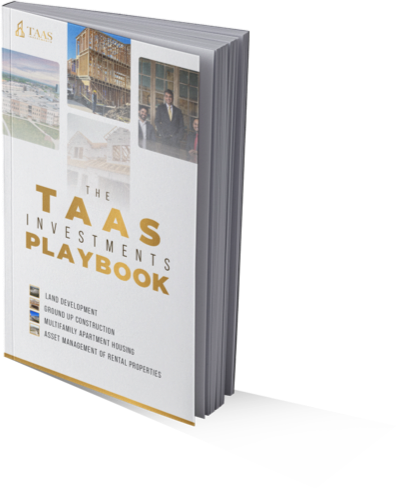In the dynamic landscape of real estate investment, multifamily Class A properties represent the zenith of luxury and location. Defined by their modernity, prime positioning, and affluent tenant demographics, these properties are typically less than 10 years old, showcasing the latest in architectural design and amenities. Situated in desirable urban or suburban neighborhoods, they cater to high-income professionals and families seeking an elevated living experience. Beyond age and aesthetics, Class A properties are characterized by their superior construction quality, advanced technology integration, and an array of amenities that set them apart from lower-tier investments.
Pros and Cons of Investing in Class A
Pros
Exceptional Tenant Quality: Class A properties attract a high-earning demographic that values and can afford premium living spaces. This demographic’s financial stability often translates to reliable rent payment, reduced default risk, and longer tenancy durations, ensuring a steady income stream for investors.
Reduced Maintenance and Upkeep Costs: Being newer constructions, Class A buildings require less maintenance than older Class B and C properties. This not only lowers operating costs but also appeals to tenants seeking hassle-free living, enhancing property desirability and occupancy rates.
Enhanced Property Appreciation Potential: The strategic locations and high-end specifications of Class A properties contribute to their strong appreciation potential. As urban and suburban areas develop, these properties are often at the forefront of demand, increasing in value more rapidly than their lower-tier counterparts.
Favorable Financing Terms: Class A properties often qualify for more attractive financing options due to their lower perceived risk by lenders. The high quality and desirability of these assets typically result in favorable loan-to-value ratios, lower interest rates, and better loan terms. This financial advantage can significantly enhance the investment’s leverage potential, making it easier for investors to maximize returns while minimizing upfront capital requirements.
Premium Brand Association: Investing in Class A properties can elevate an investor’s portfolio prestige. Ownership of high-quality assets is not just a testament to financial capability but also to strategic foresight, opening doors to exclusive investment circles and opportunities.
Cons
Higher Initial Investment: The premium nature of Class A properties comes with a correspondingly higher purchase price, making initial investment costs significantly steeper compared to Class B and C properties.
Slower Rent Growth: Given the already high rental rates, Class A properties may experience slower rent growth relative to Class B and C properties, where upgrades and improvements can lead to proportionally higher rent increases. However, focusing on niche market trends and offering unique, high-demand amenities can justify above-average rent increases, maintaining competitive edge and attractiveness to high-income tenants.
Investment Strategies for Class A Multifamily Properties
Yield Play
Yield play focuses on acquiring properties that already generate a stable income, appealing particularly to investors seeking less risky assets. Class A properties, with their high-quality tenant base and premium rents, fit perfectly into this strategy, offering predictable, ongoing returns.
Value-Add
While Class A properties are at the top of the market, targeted improvements or additions can further enhance their value. Upgrading technological amenities, adding eco-friendly features, or enhancing communal spaces can attract even higher-income tenants and justify increased rents, boosting overall property value.
Acquisition During Lease-Up Phase
Investing in Class A properties during the lease-up phase—post-construction but before full occupancy is achieved—allows investors to capitalize on potential discounts offered by developers eager to stabilize their projects. This approach involves taking on the risk associated with initial leasing but offers the reward of acquiring premier properties below market rates.
Behavior in Economic Cycles
Recession
In recessionary periods, Class A properties may face challenges such as increased vacancies or pressure to reduce rents. However, their prime locations and high-quality offerings often mean they recover faster than lower-tier properties as economies rebound.
Inflation
Class A properties can serve as a hedge against inflation, with the ability to adjust rents in response to rising costs. Their desirability and irreplaceable locations further underpin their value, making them resilient investments over time.
Comparison to Traditional Investments
Compared to traditional investments such as stocks and bonds, multifamily Class A properties offer distinct advantages for investors seeking tangible assets with potential for both income generation and capital appreciation. Unlike the volatile nature of the stock market, real estate provides a stable, tangible asset with intrinsic value, especially in prime locations characteristic of Class A investments. These properties not only generate regular rental income but also have the potential for significant capital gains due to their desirability and strategic positioning. Furthermore, real estate investments allow for leverage, amplifying returns through financed purchases, and offer substantial tax benefits, such as depreciation and mortgage interest deductions, which can significantly enhance overall profitability and cash flow.
However, real estate, particularly Class A multifamily investments, requires active management and a higher initial capital compared to more liquid traditional investments. This active involvement, encompassing tenant management, property maintenance, and strategic upgrades, provides direct control over asset performance but may deter investors seeking passive income streams. Consequently, investors are advised to seek experienced professionals for the acquisition, operations, and disposition of multifamily assets.
The combination of diversification benefits and the low correlation of real estate to other asset classes positions Class A properties as a strategic addition to investment portfolios, offering a solid hedge against market volatility and a route to substantial long-term returns. This compelling blend of stability, control, and growth potential underscores the unique value of Class A multifamily investments in achieving a diversified and resilient investment strategy.
This article is provided by TAAS Investments for informational purposes only and does not constitute legal, tax, or investment advice. Prospective investors should consult with professional advisors to assess the suitability of any investment. TAAS Investments makes no representations or warranties as to the accuracy or completeness of the information contained herein.









